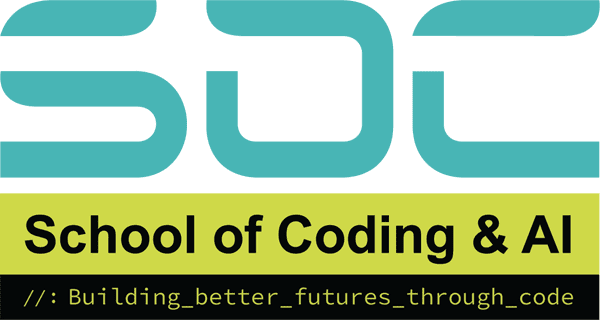Introduction
In today’s fast-paced digital world, small business owners are continuously looking for innovative, cost-effective, and efficient methods to do more with less. Enter Artificial Intelligence (AI), the game-changer that is no longer limited to tech titans. From automating processes to making better decisions, AI in small business operations is changing the way entrepreneurs operate and flourish.
Whether you own a modest bakery, a boutique agency, or a thriving e-commerce enterprise, you’ve certainly wondered how to incorporate AI into small business operations without breaking the bank. What is the good news? It’s easier and more convenient than ever before.
Beginning today, we’ll look at ten practical and powerful ways to use AI in your organisation. Let’s plunge in!
1. Automate Repetitive Tasks to Save Time
Automating dull and repetitive chores is one of the quickest ways to see results from AI. Consider scheduling emails, managing inventory, or handling client enquiries.
Tools like Zapier and Microsoft Power Automate can connect your apps and automate tasks without manual input.
According to McKinsey, automation can reduce business process expenses by up to 30%, resulting in significant savings for any small organisation.
2. Improve customer service using AI chatbots
AI-powered chatbots are available 24 hours a day, seven days a week to answer questions, schedule appointments, and direct customers through your website.
Tool Tip: To easily integrate AI chat to your website, consider platforms like as Tidio, Drift, or Intercom.
Why it works: Customers are happier when they receive faster responses. Even when you’re sleeping, your bot is still functioning!
3. Boost Sales with Personalised Marketing
AI systems evaluate client behaviour and purchase trends to provide tailored offers and information.
Example: Use Mailchimp’s AI recommendations to suggest products based on client preferences.
Did you know? Personalised emails result in 6 times higher transaction rates than generic ones. That is a game changer!
4. Predict trends and customer needs
AI can analyse data to identify trends and estimate client demand, allowing you to stay ahead of the curve.
Tool Tip: Google Trends and IBM Watson Analytics offer predictive insights at your fingertips.
Real Impact: Forecasting allows you to plan stock, marketing, and even pricing with extreme precision.
5. Optimise Social Media and Content Creation
Struggling with content? AI can help you write blogs, captions, and even create movies in minutes.
Try this: Tools such as Chatgpt, Jasper, and Canva AI can help you produce engaging content for your target audience.
Fun fact: AI-generated content can cut content creation time by up to 80%.
6. Improve the hiring and recruitment processes
Finding the proper talent is difficult, but AI can help by scanning resumes, shortlisting individuals, and even scheduling interviews.
Top tool: HireVue uses AI video interviews to evaluate candidate fit based on tone, language, and facial expressions.
Why This Matters: Spend less time screening and more time interviewing great candidates.
7. Monitor Finances and Reduce Errors
AI accounting software can help you track spending, generate reports, and detect irregularities promptly.
Go-To Tools: AI tools in QuickBooks, Xero, and FreshBooks help small businesses streamline their finances.
Pro tip: Use artificial intelligence (AI) to track expenses in real time and detect fraud.
8. Improve cybersecurity and data protection
With cyberattacks on the rise, AI can detect patterns and stop threats before they cause harm.
CrowdStrike and Darktrace employ AI to detect suspicious activities in real-time.
Peace of Mind: Protect your customers’ data without hiring a full IT crew.
9. Improve inventory and supply chain management
AI can help you improve your supply chain, forecast inventory levels, and decrease waste.
Use technologies like Ecomdash or Zoho Inventory to automate restocking and prevent over-ordering.
Stat Alert: Businesses using AI in logistics reduce delivery times by 20–30% on average.
10. Make Smarter, Data-Driven Decisions
AI helps interpret massive amounts of business data to support smarter decision-making.
Use Case: Google Analytics’ AI tools provide smart insights to improve your online marketing strategy.
Bonus: No data science degree needed—just smart dashboards and AI-powered tips.
Final Thoughts
Incorporating AI into small business operations is no longer a luxury; it is increasingly necessary for remaining competitive, saving time, and growing efficiently.
By implementing these ten concrete strategies to leverage AI in small business operations, you will not only increase efficiency but also free up more time to focus on what is actually important: creating relationships, inventing, and propelling your company forward.
It’s time to stop thinking if AI is for you and start using it to change the way you operate. AI is here to make you progress and speed up the pace of your business.
If you do not change with the time, the competitors who use AI might take over and you will be left behind. So for a boost in business, make the best use of the latest AI tools.
Frequently Asked Questions (FAQs)
A: Not anymore! Many AI tools offer free or affordable plans designed specifically for small businesses. They make the work quicker and save a lot of time, which can in turn be used to work more efficiently. This rather reduces your expenses in the long run.
A: Not necessary. Most tools come with user-friendly interfaces, step-by-step tutorials, and great customer support. Using them in routine makes you gain experience with them and makes you more confident as well.
A: Many businesses report productivity boosts within the first few weeks of implementation.
A: No. AI supports your team by removing repetitive tasks, allowing them to focus on strategic and creative work.
A: Reputable tools follow strict GDPR and security standards. Just be sure to choose trusted platforms.












